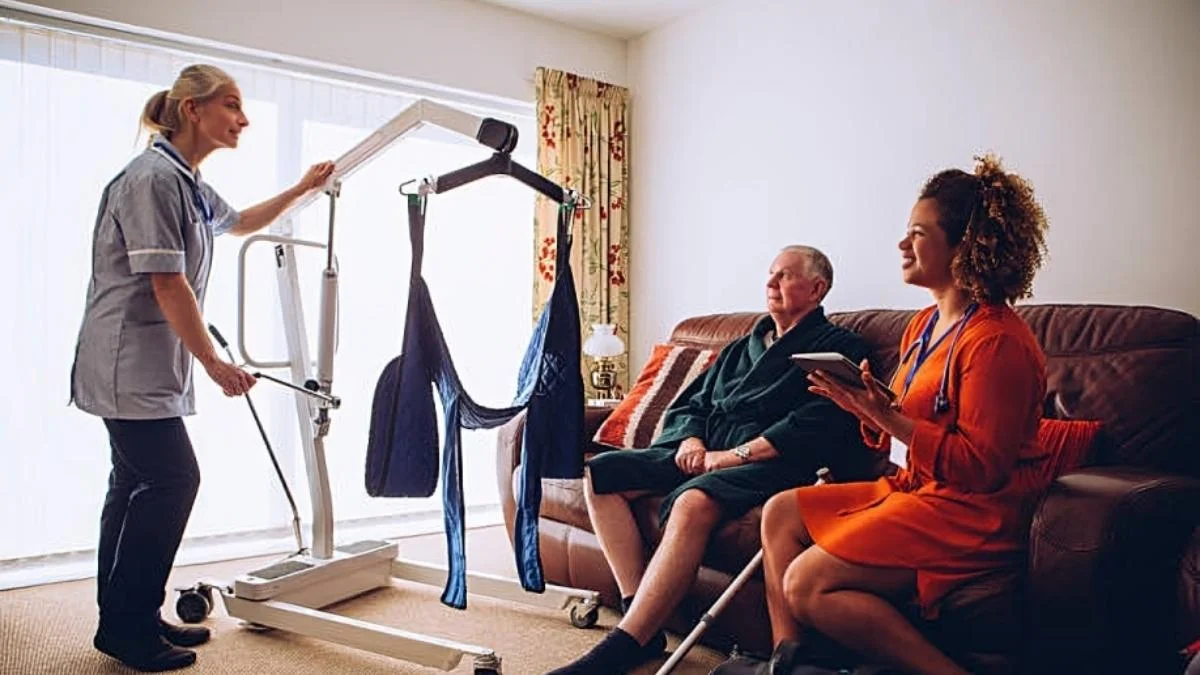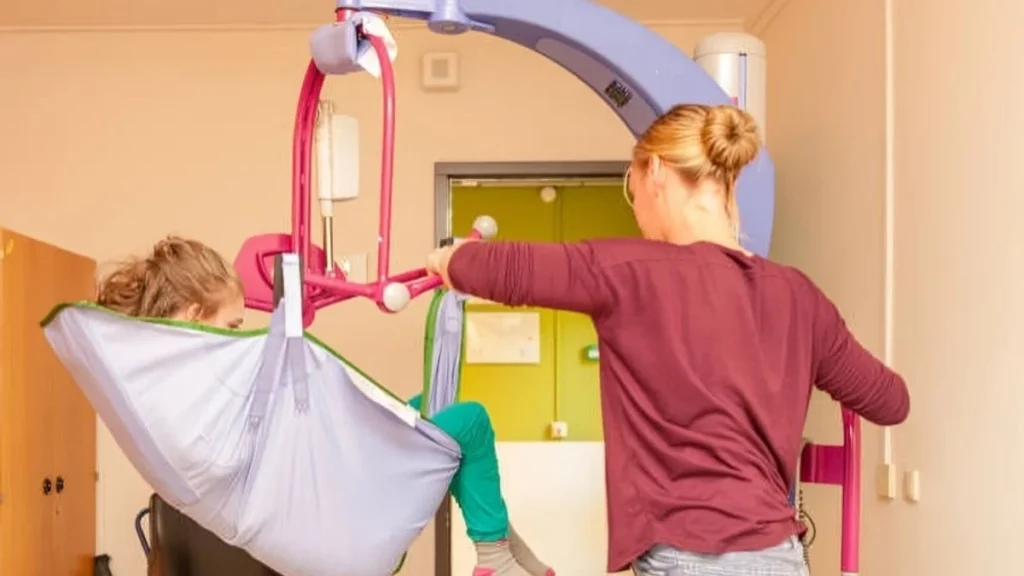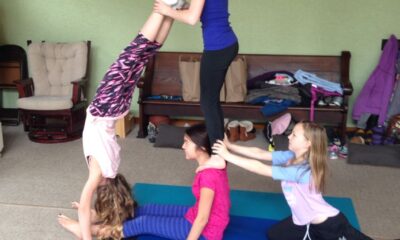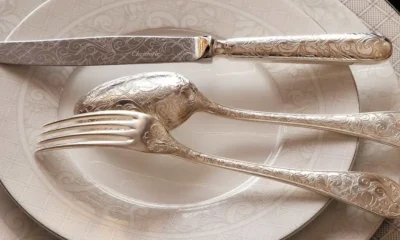HEALTH AND FITNESS
Patient Lifting Devices: Understanding their Importance

People with limited mobility fear unsafe environments more than anything else. When you lift them manually from bed to a wheelchair, it becomes a struggle at one point. Besides handling the weight of the person, you also need to ensure there is a safe transfer. At times, you end up straining your neck, shoulder, or lower back too.
This is where considering patient lifting devices becomes a crucial decision. If you are looking for one, you must discover its pros and uses. Because it is highly likely to dismiss the idea and cut down on costs.
In this blog, you will get an in-depth analysis of stand & transfer aids, ceiling and floor hoists, slings, bathroom equipment, and turnAid devices. So, continue reading it till the end.
Table of Contents
Types of Patient Handling Devices in Various Care Settings
Here are some of the most popular and easy-to-use transfer aids for home, hospitals, nursing care, and community centres.
Transfer Hoists:
Sit-to-Stand lifts are helpful for individuals who have some but not absolute ability to support their own weight. Especially when they are moving from a sitting to standing position.
People with limited mobility, recovering from surgery, stroke, or a senior elderly are more likely to benefit from the patient lifting devices. You can expect secure support, reduce strain on caregivers, allow gentle transfer, and sustainable use.
Transfer hoists typically contain kneepad, hand grips, lifting mechanism, and footplate to enhance the comfort of the patient.

Powered Transfer Aids:
Battery-operated Sit-to-Stand aids are another form of support for people with no or little ability to move freely. As these people require full assistance, an electric transfer device is always an ideal solution.
While manual transfer aids allow you to move from sitting to standing position, this device has its own pros. It ensures gentle moving between surfaces like bed to wheelchair, chair to toilet, and wheelchair to car.
When it comes to its uses, people rehabilitating after chronic disabilities or regaining strength benefit the most with electric models. While being similar to features in the manual patient lifting devices, electric standing lifts also have slings and electric motors for added support.
Ceiling Hoists:
Ceiling hoists are patient carrying devices for people with no or little mobility. These types of aids are a good use for people who cannot stand at all after a paralysis or spinal cord injury. People who are fully dependent on a caregiver must use ceiling hoists for its beneficial uses.
Firstly, the hoist is mounted on the ceiling track systems which automatically lifts the patient from the bed to a wheelchair. And then to a different room, replacing the caregiver’s help. Secondly, the tracking system allows patients to transition across corridors and different rooms without moving at all.
You can consider fixed or portable ceiling hoists depending on the frequency of the use of patient lifting devices. However, if you live in a rented house, it is best to rent a freestanding standing lifting system that works like a ceiling hoist.
Floor Hoists:
If ceiling hoists are not a practical choice, you can have floor lifters for the same purpose. In fact, these wheeled devices are easy to carry patients to different rooms or across the whole house.
Also, people who are dealing with limited physical strength to move around will find floor hoists a good solution for temporary use. However, moving this type of hoists across the floor requires the assistance of a caregiver and ample floor space.
Considering its affordability and easy replacement for ceiling hoists, these patient lifting devices still stand as a prominent choice for safe, convenient, and easy transfer.
Slings:
Slings are a fabric that support the back and hip weight of the patient during lifting, transferring, and repositioning. You will often see these systems as a key accessory on standing lifters or ceiling and floor hoists. Often connected through the straps or loops, slings on lifters enhance comfort and dignity of patients.
These are usually designed in many shapes for the specific support level. You must consider choosing among the most widely available full-body sling, U-sling, hygiene, or heavy-duty slings.
Bathroom Equipments:
Beyond all the above transfer lifters, hoists, and slings, bathroom equipment are a great addition too. You must consider bathing aids for adding convenience, dignity, and security during your bath time.
Built with ergonomic design, waterproof durability, and easy to use controls, bathroom patient lifting devices support your safety without requiring any additional help. Changing table, bathtub, privacy curtains, bath lifts, shower trolleys, and shower tables are an accessible range of products to have at home or hospital.
TurnAid:
As the name suggests, turnAids help bedridden patients to turn or reposition in gentle motions. These devices are installed over either side of the bed to allow people with no mobility to change positions, perform dressing, change diapers or do skin care without rough manual discomfort.
Though it requires a caregiver to operate the motor, the system eliminates their duty to carry the weight of the patient for every turn. Long-term bedridden individuals benefit from this device as changing positions improve blood circulation and prevent fall risks.
You must consider the right size and compatible support system with a company offering powered models.
Final Words
We hope you found this blog useful. As you see, eachof the Standing Machines for patients is designed with specific features, benefits, and use cases.
Remember, the key is to consider your mobility level, caregiver’s needs, installation requirements, space availability, and the length of time you need these devices. This ensures you save money and rely on the best efficient systems.
If you need help customising your needs, CHS Healthcare is your ultimate solution for personalised guidance.
-

 GENERAL2 months ago
GENERAL2 months agoUncovering the World of кинокрадко: The Dark Side of Film Piracy
-

 GENERAL1 month ago
GENERAL1 month agoUnveiling the Art of преводсч: How Translators Bridge Language Barriers
-

 YOGA1 year ago
YOGA1 year ago4 Person Yoga Poses for Beginners
-

 GENERAL3 weeks ago
GENERAL3 weeks agoChristofle – For Those Who Dream of Family Heirloom Silver























